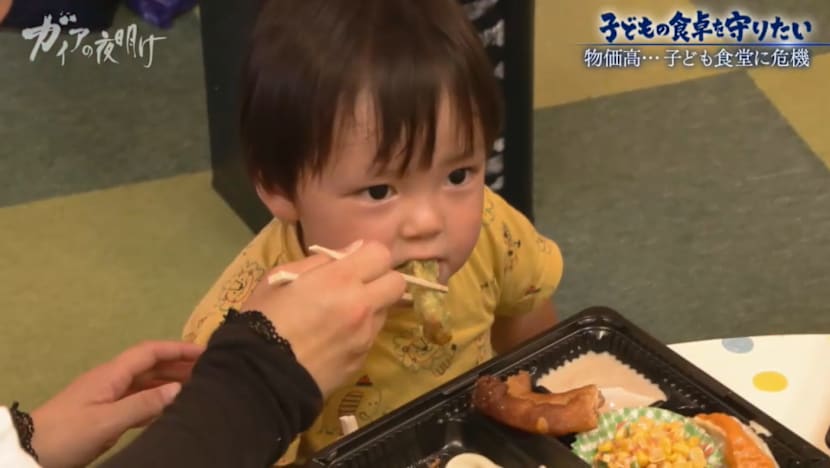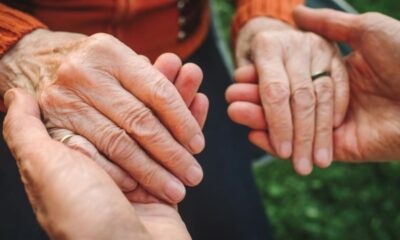Lifestyle
Communities Unite to Combat Rising Child Poverty in Japan

As poverty levels rise across Japan, communities are stepping up to address the alarming issue of child hunger. In a modest flat in Saitama, a young girl named Ai (not her real name) struggles to find enough food to eat. Living with her mother, Toshiko, who has been unable to work due to health issues since her divorce a decade ago, Ai often goes without meals. “Quite often,” she admits when asked how many days she has gone without eating. “Yesterday, I just had spinach miso soup. That’s it.”
According to the OECD, approximately 11.5 percent of children in Japan live in poverty, equating to about one in nine children. This statistic places Japan 19th among developed nations regarding child poverty rates. The situation is dire for families like Ai’s, where financial support remains insufficient. Toshiko expresses her frustration, saying, “The money we get is nowhere near enough. Prices keep rising, but the benefits stay the same.”
Community Initiatives to Alleviate Hunger
Support workers like Izumi Sekiguchi from Sainokuni Children’s and Youth Support are making a difference by visiting families in need. Sekiguchi, who visits over ten families each month, hopes to create a comforting environment for children like Ai. She recently provided Ai with a supermarket lunch box, highlighting the lack of a dining table where they could enjoy meals together. “It’s common to only have one meal a day,” Ai noted, illustrating the grim reality for many children.
In response to child hunger, initiatives like the Tsugano-wa Children’s Cafeteria in Chiba City have emerged, operating monthly and providing around 150 meals each time. The cafeteria is a lifeline for children whose parents work long hours. One child remarked, “This cafeteria is the thing I look forward to the most. At home, my parents are busy working, so they’re hardly ever there. But here, I can talk to people properly.”
The cafeteria’s monthly food costs amount to approximately 100,000 yen (around S$900), primarily funded by local business donations. Yet, rising prices are straining these budgets. Director Terumi Tanaka, a certified social worker, emphasizes the importance of providing quality meals, saying, “We want the kids to eat well, so we use Koshihikari rice. I bought it last month. Now this is all that’s left.”
Grassroots Support and Collaboration
Children’s cafeterias, known as kodomo shokudo, began as grassroots responses to child poverty but have evolved into essential community hubs. With over 18,000 cafeterias now operating across Japan, these establishments are typically run by non-profit organizations and volunteers, providing free or low-cost meals in safe environments.
The decline of community ties has contributed to the rise of these cafeterias, according to Makoto Yuasa, a specially appointed professor at the University of Tokyo. He notes that as primary schools close and shopping streets become deserted, communities are losing their connections. “People want to bring those ties back,” he explains.
One initiative, Food Bank TAMA, led by Seiichiro Shibata, collects near-expiry food from businesses and individuals, redistributing it to families in need. Shibata, now 72, expresses his motivation: “If I see a hungry child right there, I can only give them food to eat.” However, Food Bank TAMA has faced challenges, with both food received and distributed dropping by half in the past year due to rising prices and lower food surplus.
In response to these challenges, Shibata has adapted by installing commercial freezers at a local factory yard, aided by city subsidies. This allows him to accept and store frozen food donations, which are shared with children’s cafeterias.
Support from the private sector is also emerging. In Tokyo’s Itabashi Ward, a former bank branch has been transformed into Atelier Banrai Itabashi, a free facility run by the Sumitomo Mitsui Financial Group (SMFG). This space includes a library, study area, and a children’s cafeteria, aimed at providing educational and nutritional support.
SMFG staff member Ryoko Ohkaya explains the project’s significance, stating, “It’s not just doing good for society and community. It’s aligned with our strategies and focus areas.” The facility also hosts rotating children’s cafeterias and offers educational programs, such as food education classes led by corporate partners.
One recent class, conducted by House Foods, taught children how to make Fruiche, a fruit dessert. “Calcium and pectin together connect and make it springy. I learnt that today,” reflected one child after the session. Ohkaya believes these experiences are vital for children’s futures, as they learn about food and nutrition.
Despite the positive impact of these initiatives, many rely on fragile resources. While government subsidies are available, such as support of up to three million yen annually under the Local Child Life Support Project, uptake remains limited due to complex application processes and low awareness.
As community leaders like Tanaka and Shibata continue their efforts, they remain committed to helping those in need. Shibata affirms, “As long as I’m well, I want to keep doing this. If it helps someone, that makes me so happy.”
-

 Lifestyle3 months ago
Lifestyle3 months agoHumanism Camp Engages 250 Youths in Summer Fest 2025
-

 Sports3 months ago
Sports3 months agoDe Minaur Triumphs at Washington Open After Thrilling Comeback
-

 Business4 months ago
Business4 months agoKenvue Dismisses CEO Thibaut Mongon as Strategic Review Advances
-

 Sports4 months ago
Sports4 months agoTupou and Daugunu Join First Nations Squad for Lions Clash
-

 Top Stories4 months ago
Top Stories4 months agoColombian Senator Miguel Uribe Shows Signs of Recovery After Attack
-

 World4 months ago
World4 months agoASEAN Gears Up for Historic Joint Meeting of Foreign and Economic Ministers
-

 Business4 months ago
Business4 months agoOil Prices Surge Following New EU Sanctions on Russia
-

 Entertainment3 months ago
Entertainment3 months agoDetaşe-Sabah Violin Ensemble Captivates at Gabala Music Festival
-

 Health3 months ago
Health3 months agoNew Study Challenges Assumptions About Aging and Inflammation
-

 Entertainment3 months ago
Entertainment3 months agoBaku Metro Extends Hours for Justin Timberlake Concert
-

 Business4 months ago
Business4 months agoU.S. House Approves Stablecoin Bill, Sends to Trump for Signature
-

 Top Stories4 months ago
Top Stories4 months agoRethinking Singapore’s F&B Regulations Amid Business Closures









